article In conversation with
Rebecca Newnham
In conversation with
Rebecca Newnham
Rebecca Newnham
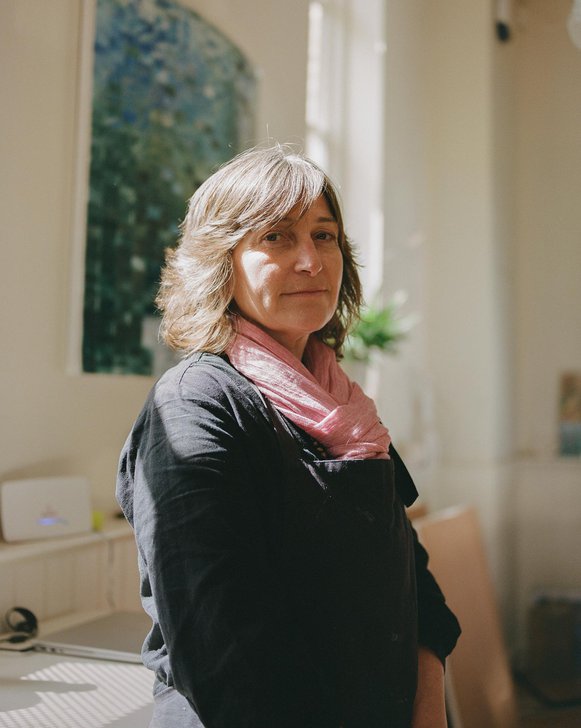
In conversation with Rebecca Newnham about
glass, durability, and the life-giving force of water.
glass, durability, and the life-giving force of water.
In conversation with Rebecca Newnham about
glass, durability, and the life-giving force of water.
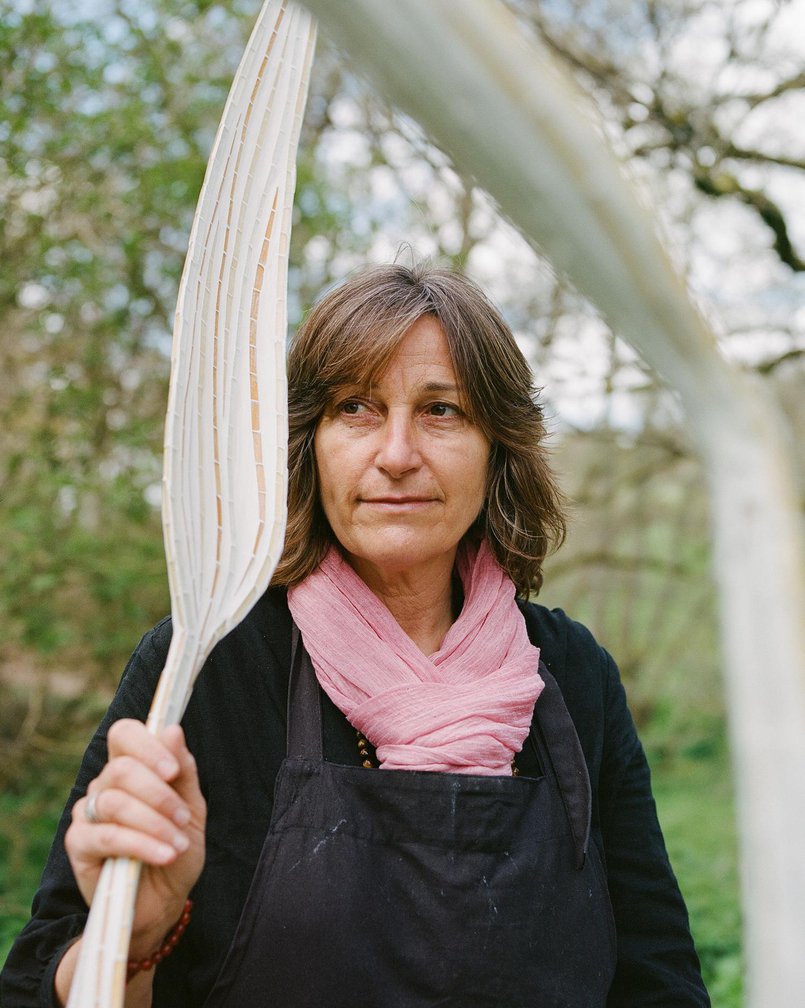
Influenced by her experience of place, Rebecca Newnham's glass sculptures champion our understanding of organic systems. They play with light, material and are deeply connected to their landscape. Whilst her sculptures consider the physical and scientific, they also acknowledge the spiritual and magical side of our lives.
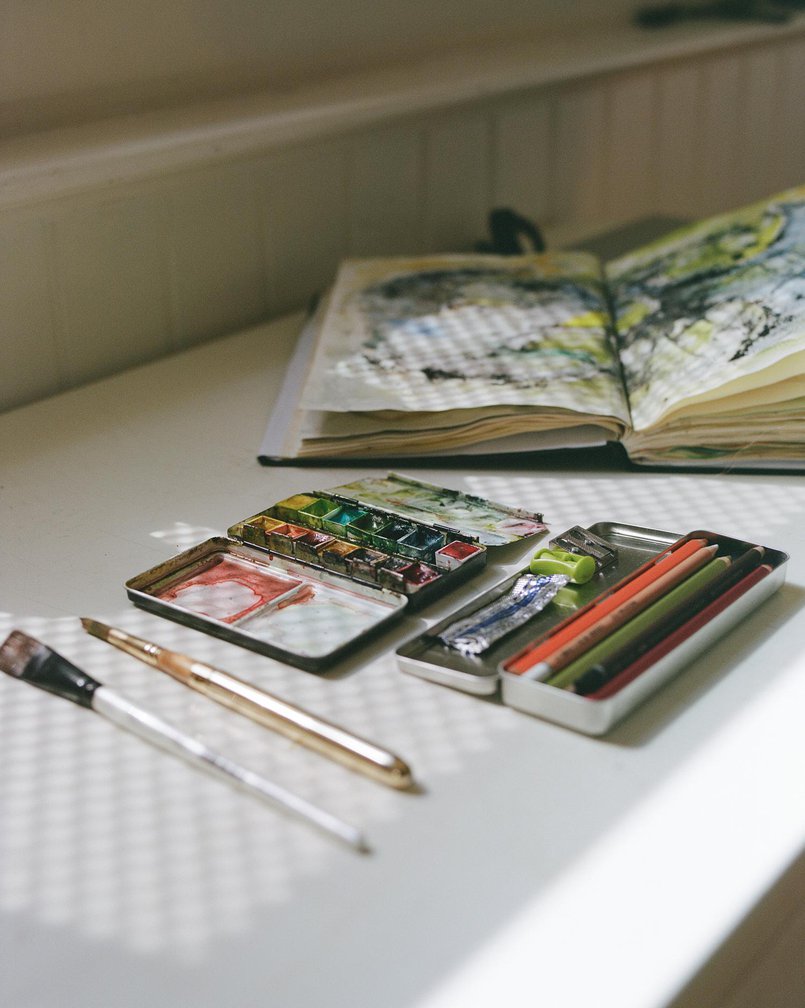
Artiq When did you first decide that you wanted to be an artist? Why?
Rebecca I knew that I wanted to be an artist at 17 when my art teacher asked which art school would I apply to. Until that point, I didn’t think I was good enough. I told my family and it wasn’t received well! They didn’t think I would “make a living as an artist”. Eventually we compromised and I applied to a design course. I don’t regret anything, I leaned all kinds of practical skills which I use still, like mould making and how to cut glass.
Artiq Working with glass has been a key part of your practice over the years. What initially drew you to this way of working? Has your use of glass evolved since you started working with it?
Rebecca I first encountered using glass during my first year at art school when I walked past the furnace room at North Staffs Poly. I was drawn in and knew pretty much immediately that This Was It! I blew glass for a few years and worked as a hot glass assistant in glass studios. I have painted with glass enamels for just as long, enjoying experimenting with fresh ways of working. When at the Royal College of Art however, I focused on one aspect of glass making and chose to concentrate on flat glass, painting with enamels and cutting up the results to wrap around a form. Since those early days, my practice has evolved to concentrate on emphasising the unique qualities of glass to best express an experience of place.
Rebecca I knew that I wanted to be an artist at 17 when my art teacher asked which art school would I apply to. Until that point, I didn’t think I was good enough. I told my family and it wasn’t received well! They didn’t think I would “make a living as an artist”. Eventually we compromised and I applied to a design course. I don’t regret anything, I leaned all kinds of practical skills which I use still, like mould making and how to cut glass.
Artiq Working with glass has been a key part of your practice over the years. What initially drew you to this way of working? Has your use of glass evolved since you started working with it?
Rebecca I first encountered using glass during my first year at art school when I walked past the furnace room at North Staffs Poly. I was drawn in and knew pretty much immediately that This Was It! I blew glass for a few years and worked as a hot glass assistant in glass studios. I have painted with glass enamels for just as long, enjoying experimenting with fresh ways of working. When at the Royal College of Art however, I focused on one aspect of glass making and chose to concentrate on flat glass, painting with enamels and cutting up the results to wrap around a form. Since those early days, my practice has evolved to concentrate on emphasising the unique qualities of glass to best express an experience of place.
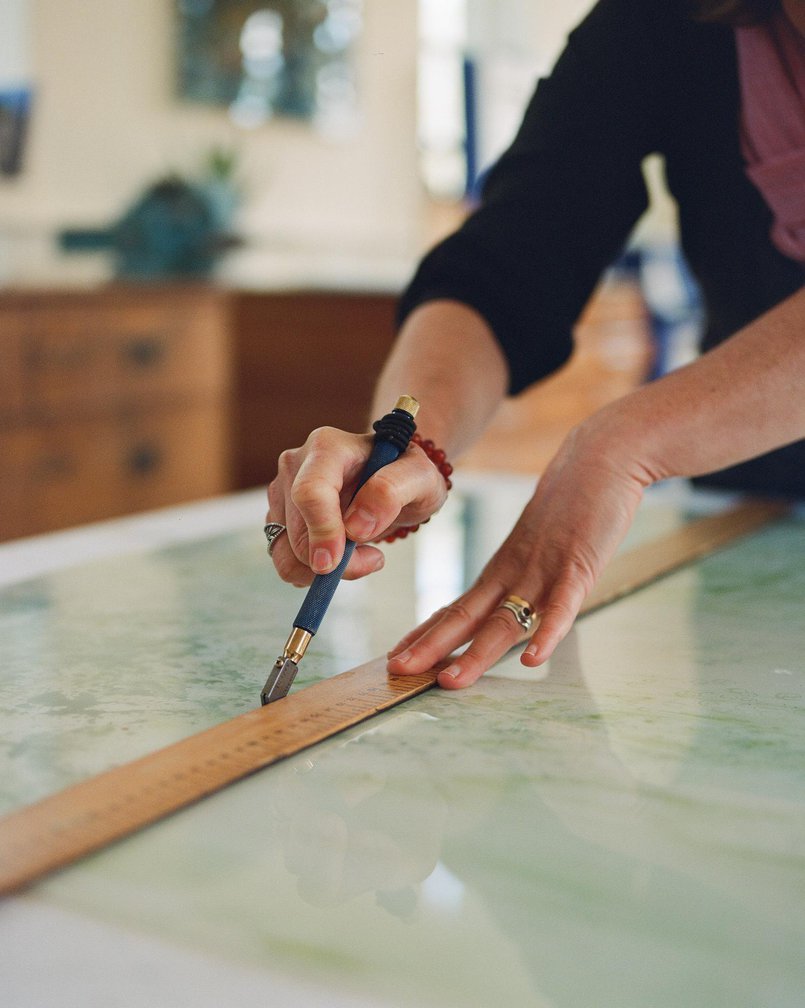
Artiq You have an ongoing interest in water, particularly the sea. Can you speak a bit more about how this interest informs your practice?
Rebecca The spiritual side of water draws me in, as does the science of how it moves. It is life-giving and is a good symbol of where we are as a society. The reflective surface of the water, what lies behind the surface, and simultaneously, the ambient reflection of the viewer in the glass, are all aspects of the final work.
Artiq You have displayed work in both public spaces and galleries, as well as private settings. Could you elaborate on the different approaches you take to each?
Rebecca Each space has specific requirements that need to be embraced to avoid problems. I start by asking what would be great in this particular opportunity, for example in a cathedral, outside a school or in a sculpture garden, what I want to say and how best to express myself. Then practical considerations are important to grasp. I usually make a model and discuss with a structural engineer before making adjustments and drawing up.
If I am making work for a show in an art gallery, I consider how people will interact with the work and I make it safe to touch (polish sharp edges for example). Light is of huge importance to me, and this is a major consideration.
Rebecca The spiritual side of water draws me in, as does the science of how it moves. It is life-giving and is a good symbol of where we are as a society. The reflective surface of the water, what lies behind the surface, and simultaneously, the ambient reflection of the viewer in the glass, are all aspects of the final work.
Artiq You have displayed work in both public spaces and galleries, as well as private settings. Could you elaborate on the different approaches you take to each?
Rebecca Each space has specific requirements that need to be embraced to avoid problems. I start by asking what would be great in this particular opportunity, for example in a cathedral, outside a school or in a sculpture garden, what I want to say and how best to express myself. Then practical considerations are important to grasp. I usually make a model and discuss with a structural engineer before making adjustments and drawing up.
If I am making work for a show in an art gallery, I consider how people will interact with the work and I make it safe to touch (polish sharp edges for example). Light is of huge importance to me, and this is a major consideration.

Artiq Your 'Sacred Water Series' uses a light, bright colour palette and a subtle curve, giving the work a feeling of movement and energy. Could you elaborate on the processes you use in order to create this effect?
Rebecca The Sacred Waters Series are 4 glass wall panels that reflect an experience of place, of 3 different sacred wells and a river that crosses the St Michael's Way. These locations are natural stopping places, where walkers have pause, to drink or refresh, and take a breath, before continuing with the journey. I collect water from the locations that feature in the panels and use it to mix with glass enamels to paint. The minerals present in the water influence the outcome. In Red River, for example, the iron-rich deposits appear as a green and brownish tinge.
My process starts with painting on glass in enamels in layers and multiple firings in the kiln. The glass is then cut up according to what I am expressing in the work. In the case of the Sacred Waters Series, the pieces are either triangular, symbolic of water, or a flowing diagonal curvy line, suggesting direction and movement. The work is then collaged so that the image vibrates and mixes in the eye. The curved surface means that as the viewer moves, the reflections they see change too.
Rebecca The Sacred Waters Series are 4 glass wall panels that reflect an experience of place, of 3 different sacred wells and a river that crosses the St Michael's Way. These locations are natural stopping places, where walkers have pause, to drink or refresh, and take a breath, before continuing with the journey. I collect water from the locations that feature in the panels and use it to mix with glass enamels to paint. The minerals present in the water influence the outcome. In Red River, for example, the iron-rich deposits appear as a green and brownish tinge.
My process starts with painting on glass in enamels in layers and multiple firings in the kiln. The glass is then cut up according to what I am expressing in the work. In the case of the Sacred Waters Series, the pieces are either triangular, symbolic of water, or a flowing diagonal curvy line, suggesting direction and movement. The work is then collaged so that the image vibrates and mixes in the eye. The curved surface means that as the viewer moves, the reflections they see change too.
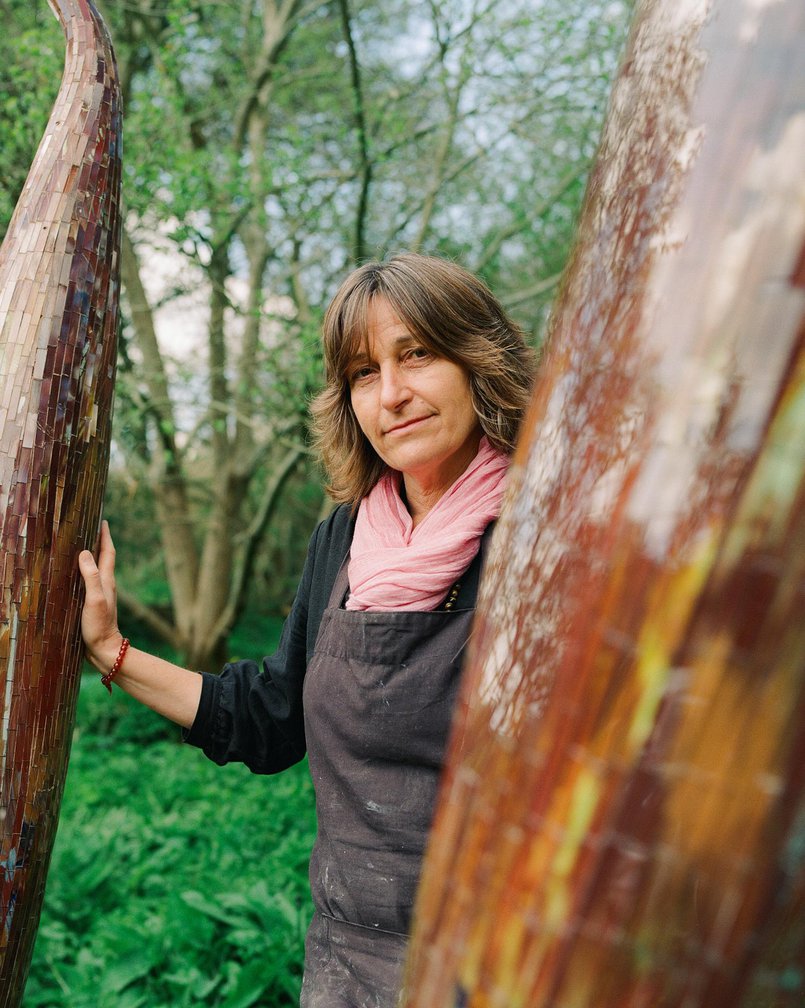
Artiq What have been the biggest successes and challenges that you have faced as an artist? How have they shaped your work?
Rebecca Challenges: once I made a commissioned work and used gold leaf to gild glass. It reacted with a new gold size I used and the whole went black. I started again. Now I always check if materials are fit for purpose, I phone the supplier, they usually have a technical department, and explain what I am doing and ask if their product will work.
I wrote my thesis as part of my MA on Italian Wall Mosaics, which have survived centuries. They have survived because the materials are sound. This is particularly important when it comes to substrate and adhesives, so I do my research to hopefully avoid problems.
Probably the biggest challenge of all is hanging in and continuing to make your work and, in my case, make a living. Paul Smith advises juggling several projects at once so that if one pauses, another is there to take up. I also follow Eduardo Paolozzi’s advice, and I am prolific. The main thing is to just keep going!
Artiq Do you have any exciting upcoming projects that you would like to share with us?
Rebecca I am delighted to be placing my sculpture at Tremenheere Sculpture Gardens in Cornwall later this year, and I have a solo show next May at the Vanner Gallery in Salisbury. A new body of work is in progress, inspired by ponds, dew ponds, and salt marshes!
Rebecca Challenges: once I made a commissioned work and used gold leaf to gild glass. It reacted with a new gold size I used and the whole went black. I started again. Now I always check if materials are fit for purpose, I phone the supplier, they usually have a technical department, and explain what I am doing and ask if their product will work.
I wrote my thesis as part of my MA on Italian Wall Mosaics, which have survived centuries. They have survived because the materials are sound. This is particularly important when it comes to substrate and adhesives, so I do my research to hopefully avoid problems.
Probably the biggest challenge of all is hanging in and continuing to make your work and, in my case, make a living. Paul Smith advises juggling several projects at once so that if one pauses, another is there to take up. I also follow Eduardo Paolozzi’s advice, and I am prolific. The main thing is to just keep going!
Artiq Do you have any exciting upcoming projects that you would like to share with us?
Rebecca I am delighted to be placing my sculpture at Tremenheere Sculpture Gardens in Cornwall later this year, and I have a solo show next May at the Vanner Gallery in Salisbury. A new body of work is in progress, inspired by ponds, dew ponds, and salt marshes!